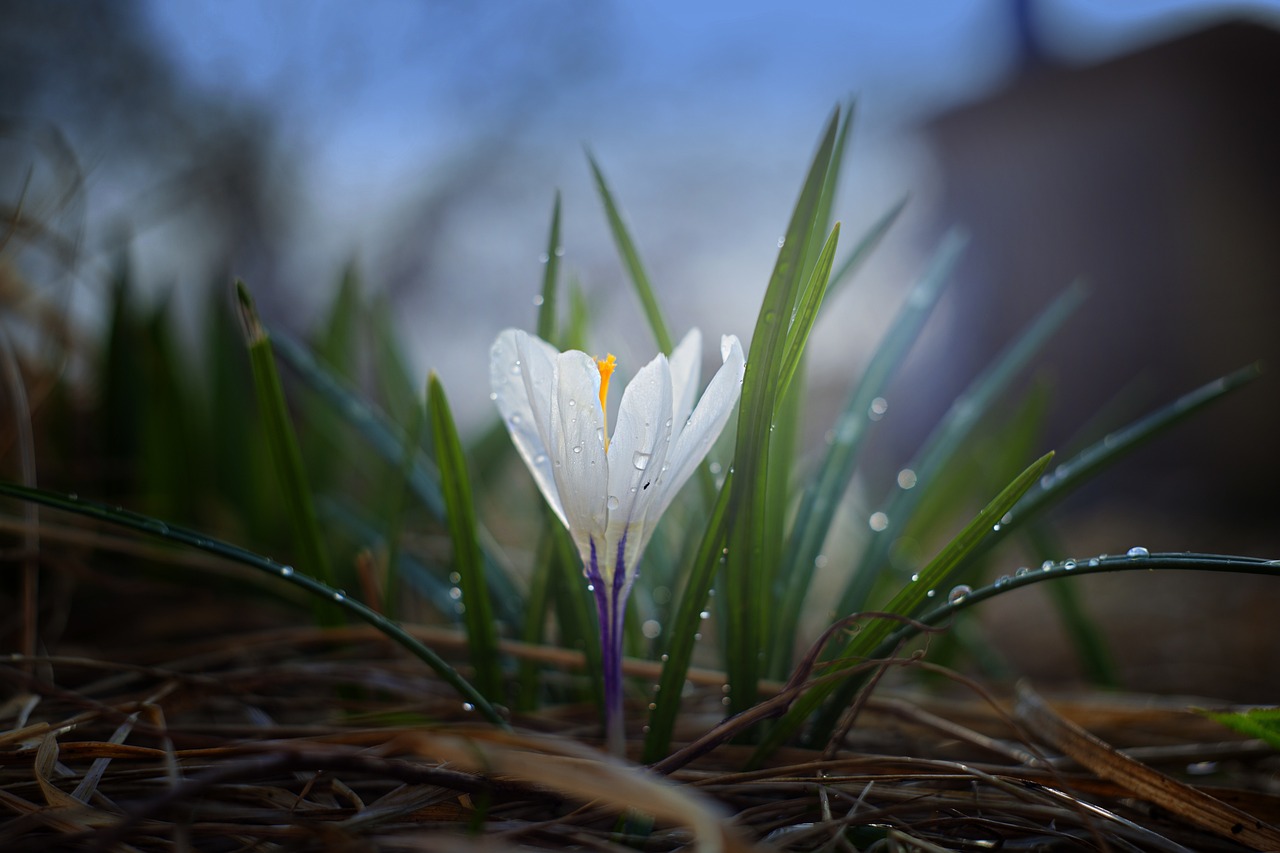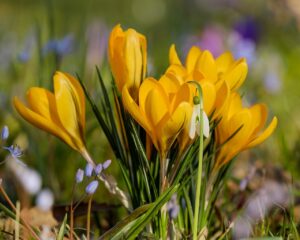Crocus
Overview
The Crocus plant, anchoring its roots from the iris family, is a charming perennial that paints landscapes with a spectrum of colors like a living mosaic. Not just a beauty to behold, the plant is also linked to the culinary treasure of saffron. These vibrant flowers bloom with the earliest whispers of spring, symbolizing fresh starts and nature’s unwavering cycle. Whether adorning gardens or signalling the time for saffron harvest, the Crocus plant holds a special place in both horticultural and cultural histories.

Characteristics
Known for its early spring bloom, vibrant color varieties, and the production of the culinary spice saffron.
Region
Native to regions from the Mediterranean and Eastern Europe to Northwest China.
Natural Habitat
In the wild, it is usually found in alpine tundra, woodlands, scrub, and meadows.
Cultivation
Prefers full sun, requires well-drained soil, and moderate watering, avoiding excessively moist conditions.
Uses and Benefits
The Crocus plant, with its tapestry of colors, offers more than just aesthetic value to gardens and landscapes. The standout hues of pinks, reds, oranges, yellows, purples, and blues bring life and vibrancy to the late winter scenery1.
Beyond its beauty, the Crocus sativus species plays a crucial role in the culinary world as the source of saffron—one of the most precious and expensive spices globally2. The plant’s ability to withstand cold and emerge as one of the first blooms of spring makes it a cherished symbol of the season’s renewal.

Cultivation Tips
To cultivate your Crocus plants successfully, start by planting the corms in the fall for a burst of color in early spring. Choose a spot with well-drained soil as Crocuses are not friends with waterlogged conditions or heavy clay4.
Ensure that each corm is nestled 3-4 inches deep into the soil and spaced about 3-6 inches apart to give them ample room to flourish. They love basking in the sunlight, so a sunny spot is ideal4. Remember, if you decide to plant them in your lawn, wait to mow until the leaves yellow, which typically happens 6 weeks post-bloom. This patience allows the plant to store energy for the next year4. With these tips in hand, you’ll have a spring garden full of vibrant Crocuses that come back year after year.
Seasonal Considerations
Seasonal shifts beckon diverse flora to flaunt their vivid hues, but it’s the Crocus, a harbinger of spring, that often takes the lead. These resilient plants begin their display in late winter or early spring, sparking joy as they puncture through the last vestiges of frost with their colorful blossoms. As temperatures gradually rise, the Crocus stands as a testament to the changing of the guard, from the chill of winter to the promise of warmer days3. Their early blooming can serve as a perfect clock for gardeners, signaling it’s time to begin the new planting season.
Positioned right, a Crocus’ early splash of color can enliven a dormant garden, making it a beloved choice among those who eagerly await spring’s full arrival.

Issues and Troubleshooting
In the enchanting world of gardening, Crocus plants generally flourish without much fuss. However, they can stumble upon a few hiccups, especially if the soil they call home is less than ideal. Heavy clay soils and waterlogged conditions are not their cup of tea, and when confronted with such, they may protest, leading to poor growth or even root rot4.
To keep your Crocus merry, aim for that sweet spot of well-drained soil and ensure they bask in enough sunlight. If they’re cozily snuggled in your lawn, be patient and let their foliage turn to gold – that is, a yellow hue – before reaching for the lawnmower. This usually takes about six weeks post-bloom4. Remember, a happy Crocus promises a spectacular spring show year after year!
History and Folklore
The Crocus plant, steeped in history and folklore, has traversed through time as more than just a floral beauty. With roots in the cradle of Mediterranean civilizations, it has become entwined with the fortunes of empires and the daily lives of people, as suggested by the Middle English origin of its name, which points directly to its role in yielding saffron2. Recognized as much for its vibrant blossoms as for its precious golden threads of spice, the Crocus has indeed etched its influence deep into cultural narratives and ancient trade routes. Conjuring images of lush purple fields, the plant is often revered not only for its economic value but also for its place in ancient myths, symbolizing everything from youthful love to the transformation and rebirth celebrated with the coming of spring.
References
1. ‘Crocuses: How to Plant, Grow, and Care for Crocus Flowers | The Old …’, https://www.almanac.com/plant/crocuses
2. ‘Crocus – North Carolina Extension Gardener Plant Toolbox’, https://plants.ces.ncsu.edu/plants/crocus/
3. ‘How to Grow and Care for Spring Crocus – The Spruce’, https://www.thespruce.com/planting-and-caring-for-crocus-1402246
4. ‘Crocus vernus – Plant Finder – Missouri Botanical Garden’, https://www.missouribotanicalgarden.org/PlantFinder/PlantFinderDetails.aspx?taxonid=281107
5. ‘Crocus – Wikipedia’, https://en.wikipedia.org/wiki/Crocus
Image Credit: shapkasushami
Image Credit: Hans
Image Credit: Couleur
Nicolas Duval
Nicolas is a passionate advocate for nature and the art of wildcrafting. His dedication shines through in Wildcraftia, a website he meticulously crafted to serve as a haven for nature enthusiasts worldwide. Driven by a deep appreciation for nature’s connection to humanity, Nicolas embarked on his journey in 2011 with SmokableHerbs, a platform showcasing his love for nature’s bounty. Building upon this foundation, he established Smokably, a thriving online store offering premium herbs and blends to a global audience.
